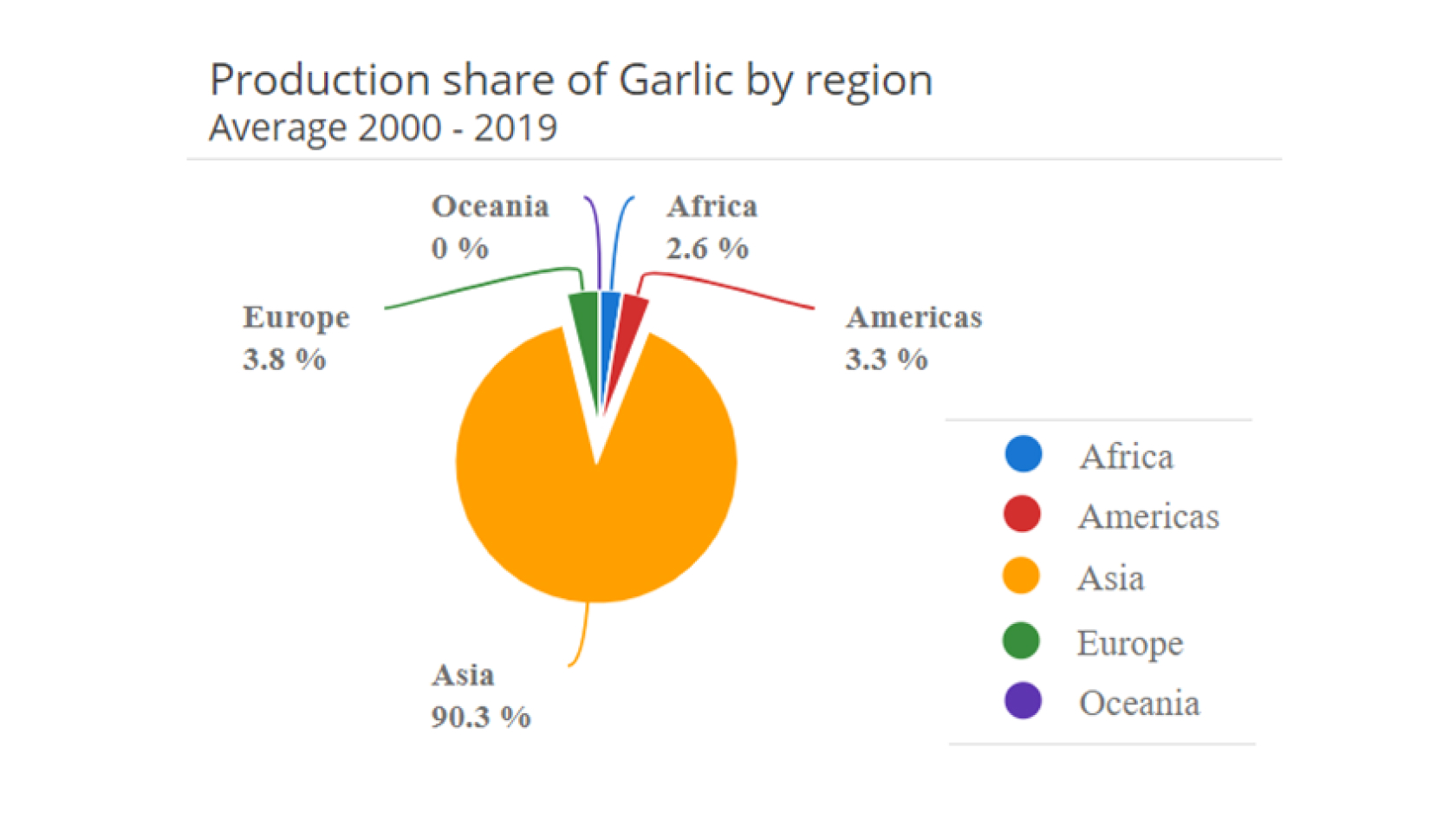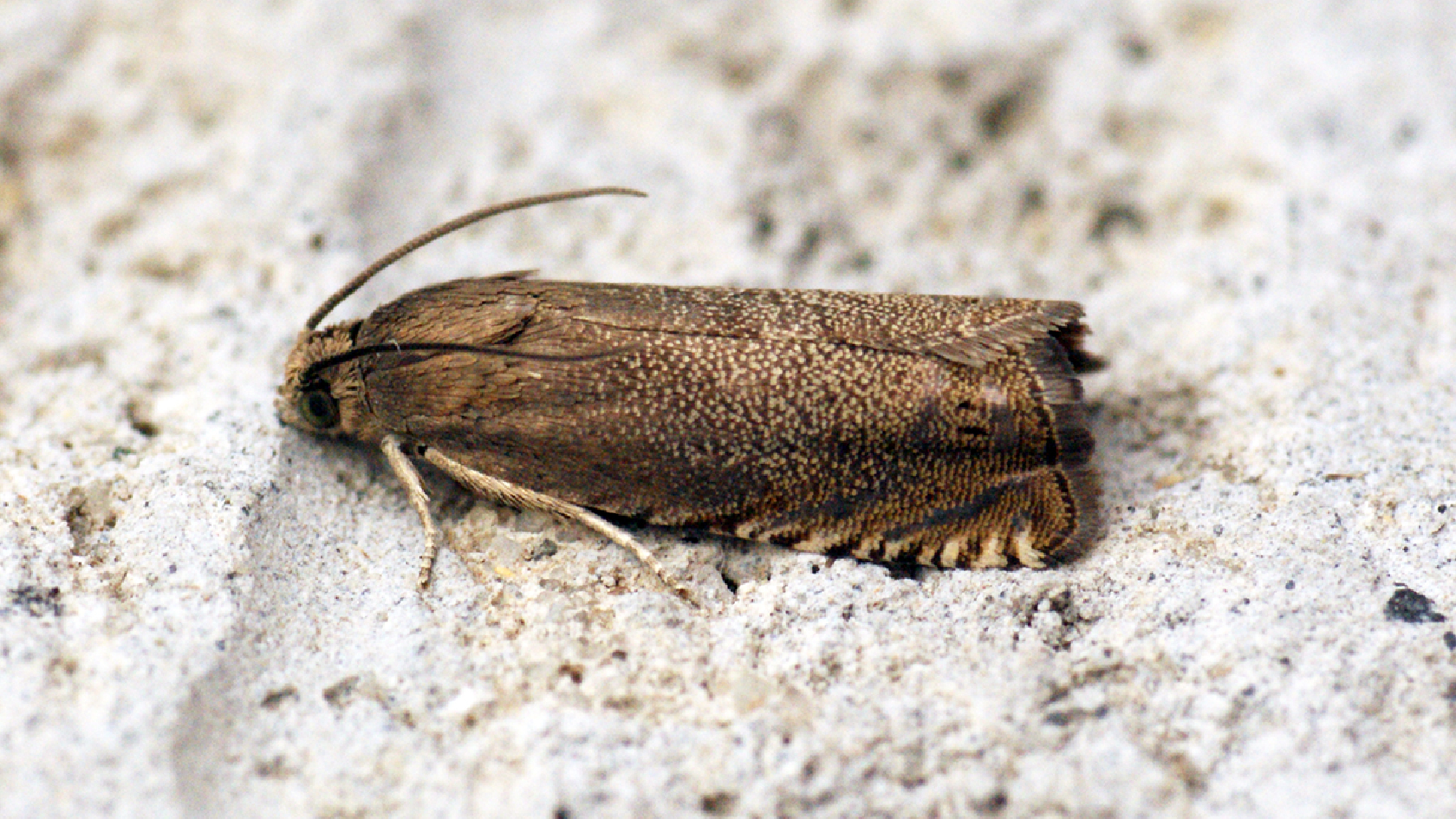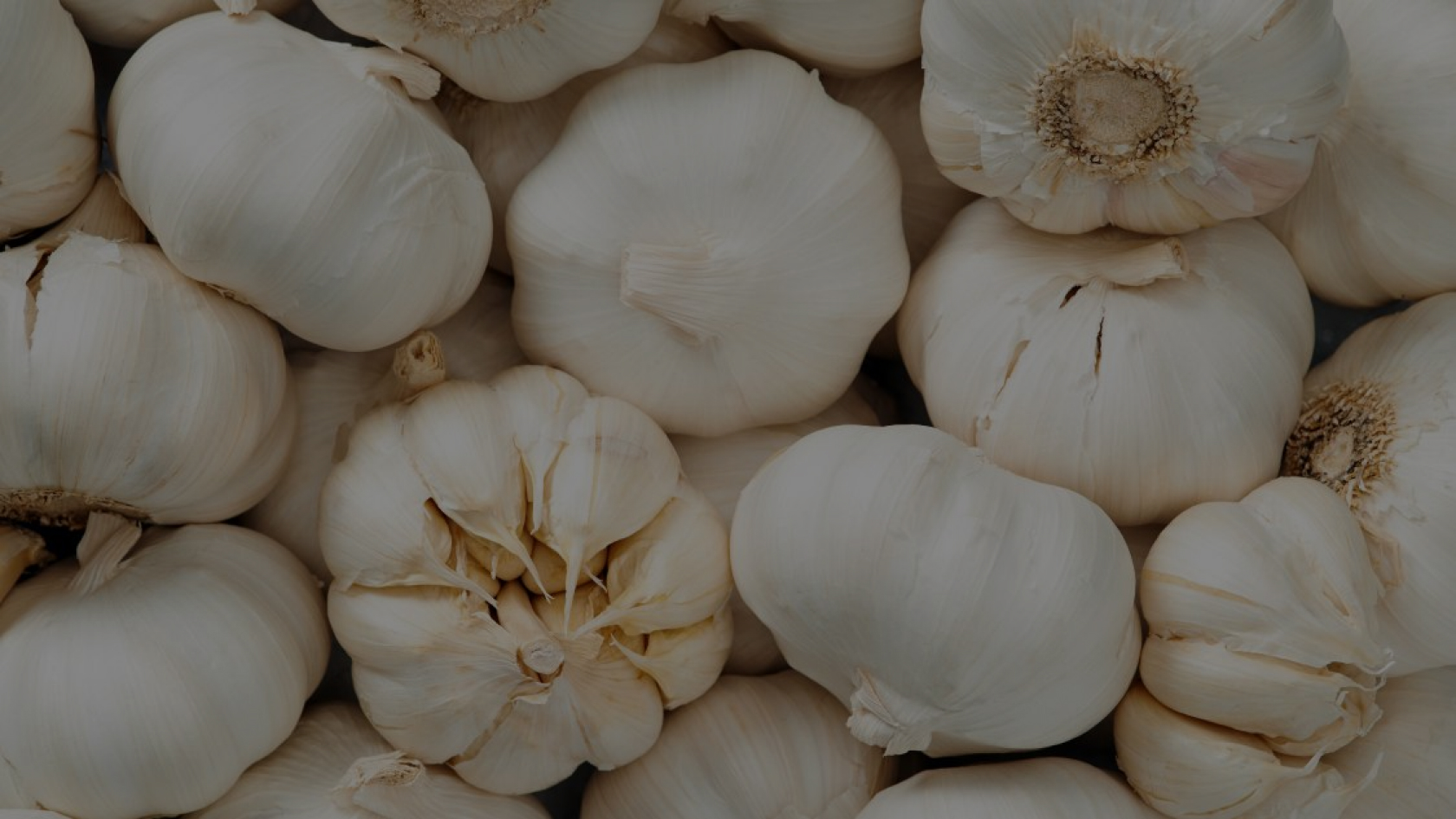- Where is this crop extended? Growing garlic is a thriving culture that can reach 12 to 14 tonnes of product per hectare. The principal commercialized part is the dry bulb of this plant. According to the Food and Agriculture Organization (FAO) of the main productive region is Asia, reaching between 2000 and 2019 an average of 18,880,698 tonnes per year, producing 90.3% of the world total. China is the country that produces the highest amount of garlic, followed by India. In Africa the main producer country is Egypt, the USA in America and Spain in Europe.

image: Food and Agriculture Organization (FAO)
This plant, whose scientific name is Allium sativum, needs sandy loam soils to grow appropriately, and a proper fertilization plan is recommended to obtain a suitable size and quality for the market. Find personalized advice for your crop in the i-Plant Nutrition and cover the specific needs of your plants. However, not only a good fertilization plan is required, but also the absence of pathogens. Due to its organoleptic characteristics, you will never observe the presence of slugs, snails, rodents, rabbits, mice, moles or ants in your garlic plantation, since all these animals are repulsed. Even if in popular culture, garlic extracts or alcohol solutions are widely used to repel insects and diseases in other plants, some insects, fungus and viruses are attracted by this species. Find those principal enemies. - Viruses, the worst enemies of garlic crops The researchers focus on virus infection, trying to eradicate this problem in garlic crops. Virus infection is the main cause of not only damage to individual bulbs, but also a drop in crop yield in general. The infection of more than one variety simultaneously is possible, increasing the damage and leading in occasion to plant death. At the Instituto de Investigaciones Agropecuarias (INIA) in Chile, a great collection of viruses has been identified. The main one, also observed worldwide, is the onion yellow dwarf virus (OYDV) that causes abnormal forms and patterns on the leaves and dwarfing the whole plant. The OYDV uses insects as a vector to reach the garlic plants, specially Aphis craccivora, Aphis gossypii, Lapaphis erysimi, Myzus cerasi, Myzus persicae and Rhopalosiphum padi has been identified. In addition to OYDV, which is the more extended, five more viruses have been identified. Sometimes, more than one virus can infect your crop, so we recommend you deeply investigate them in order to prevent them from having successful development using your plants as a host. The other five species detected are the garlic common latent virus (GaCLV), leek yellow stripe virus (LYSV), garlic virus A (GaV-A), garlic virus X (GaVX) and garlic mite-borne filamentous virus (GarMbFV). The infection or co-infection of viruses provoke losses ranging from 20 to 70% of the total production.

Onion yellow dwarf virus (OYDV)
- Fungus are hard to avoid As mentioned, sandy loam soils are preferred for garlic plants. The water must drain correctly because its accumulation will be more advantageous for fungus than for the garlic itself. When it occurs, the fungus will not take long to appear. Some of them might sound familiar to you because the most harmful species are also present in a large number of crops.
For example, the fungus Penicillium sp. Infect the cloves changing their colour initially, due to the fungus development and producing a general decay later. Changes in the appearance and the total destruction of the plant structure will also be found when other fungi are present, like Phytophthora infestans, Puccina alli or Puccina porri and Botrytis cinerea. In all cases, early detection and preventive measures are key.
Garlic weevil (Brachycerus algirus) - Insects want their part The organoleptic properties of garlic plants do not seem to be repulsive to insects. In fact, many species can be found in your crop to get host, feed or to deliver their larvae in these plants. Some of them are so garlic-specific that they also contain the name of this crop in its common name. This is the case of the Garlic weevil (Brachycerus algirus), whose larvae attack and destroy the bulbs specifically. As well as the Ringworm of garlic (Lita alliela) that initially attacks the aerial part of the plant, interfering in its photosynthesis capacity, and continues moving down to the bulbs where open galleries make the plant turn yellow and die.
.jpg)
Garlic weevil (Brachycerus algirus)
On the other hand, there are insects with a different modus operandi like the pea moths (Laspeyresia nigricana) that deposits their eggs so that the caterpillar penetrates the interior of the leaf sheaths to the buds. This obstructs the development of the plant that soon loses its ability to photosynthesize and gets yellow to rot.
Laspeyresia nigricana
- Be faster than the problem Here, we mentioned some of the most common pests and diseases found in garlic crops. However, there are much more of them out there. Maintain your plants fertilized to be strong enough to resist any inconvenience that they may suffer following the advice you can find in the i-Plant Nutrition. In addition, make sure you track the status of your plants with periodical observations and apply remedies immediately when the presence of any pathogen is detected. Count with the knowledge of our experts for any question you may have, and do not hesitate to take part in the i-Plant Nutrition community where you could discuss with other farmers and professionals.






